Roadster:

65 roadster. Mounts a bit further back than subsequent pictures, so possibly a dealer or owner addition (subsequently seen on a 72 roadster). This would conform to owners of some early American cars saying theirs don't have these mounts, and theirs only came with lap belts, despite Clausager stating all MGBs always had mounting points, and that when dealer fitted to UK cars they were 3-point.

67 MGC.

68/69 roadster (Clausager).

Quick-release clip for the static belts when mounted to the tonneau panel on Mk2 to 71 roadsters for North America and from 71 to May 77 roadsters elsewhere, replacing the arch boss. (Leyland Drivers Handbook)

Original fittings with a black plastic 'PRESS' insert.

A neat replacement seen on the New Forest Run in 2007, and subsequently on the car owned by a pal of a pal ...

... probably from SC Parts Group Ltd, not cheap at £32 each, apparently. Also available from Moss as part number SBK1001K (item 29) at £36 for a pair at the time of writing. The Moss drawings did appear to show the original design of button to press, but have been changed to show the same as the other supplier i.e. a metal push-button instead of the original plastic. The MGOC also have them (item 3), it looks like an original drawing, but you would have to check if it is the original plastic push-button or not.
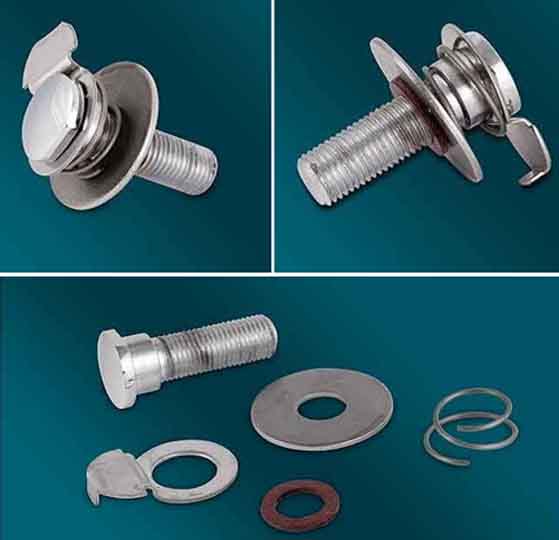
The bolts go into a welded nut under the rear deck - with bolt 'G' fitted here. That was to prevent water ingress until I discovered the plugs in the next image:

May 2018: If that wasn't enough, someone was asking about plastic slotted blanks that filled the holes in the tonneau cover when the quick-release system wasn't being used. I couldn't see why plugs of that type would be used in the cover, but it struck me that they may have been used to cover the holes in the tonneau panel itself. I had an idea I had one kicking around somewhere, in one of my many boxes of bits, that probably came off our Mini in the late 60s when my future father-in-law 'suggested' I fit seat belts ... And so it proved to be. A bit more research came up with these RFN207 'grommets', which some suppliers do show as a conventional grommet instead of this plug, others show then as 24K6821 blanking plug.


May 2015: And if that wasn't enough Jack Wheeler in America has discovered that there is a plastic insert - item 3 here - between the webbing and the chrome tongue, presumably to protect the webbing from fraying on the edges of the slot in the tongue. He is missing one and keen to replace it. Were these on all static shoulder belts? Or only on these 'quick-release' type? And if not on all statics, why not? One would think that the stresses on all belts would be the same, especially given that this type of belt is only unclipped by exception, and probably clipped back straight away.

A check of several static belts revealed no insert on the shoulder fitting, so I was beginning to think it was manufacturer-specific. And as I can't see why it would only be needed in that position I checked my inertia belts and on what I strongly suspect are the original Kangol Reflex belts in the V8 I find these inserts on the sill fitting, and Jack used that information to find the required insert.

Bee's after-market inertia reels mounted in the post December 71 (North America) and September 76-on (other markets) position - on the arch right at the back and just above the chassis rail. The hole for these has to be drilled as there was no boss on the roadster wheel arch while the tonneau quick-release fastening was provided. Fitted in this position ...

... they don't prevent the hood from folding fully into the space behind the seats, as some have complained.
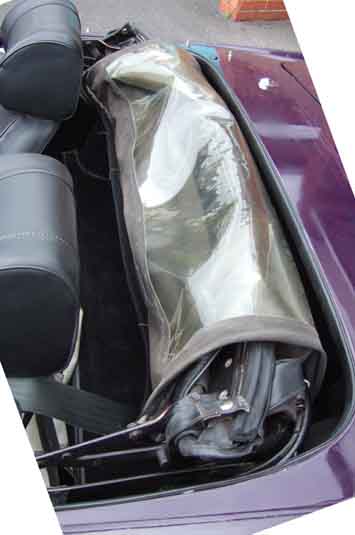
A Pal's 72 roadster, albeit nearer the early static position rather than the later inertia position. Bolt head inside the cabin is neater, but nut and threads inside the cabin will keep them free from corrosion!

Both the above use the MGOC fitting kit (item 2), which includes the factory right-angle bracket BMH9512/3. Securon 514/30 belts can be mounted at virtually any orientation as they have adjuster knobs to ensure the mechanism works correctly. This means they can be mounted directly to the inner arch, but the belt then exits the reel vertically, which is less than ideal for its relative position to the seat and compromises retraction. Complicated still further by the presence of a commercial windstop, and a home-brew 'clip' to bring the buckle closer to hand when getting in the car and fastening the belts. (Michael Beswick)
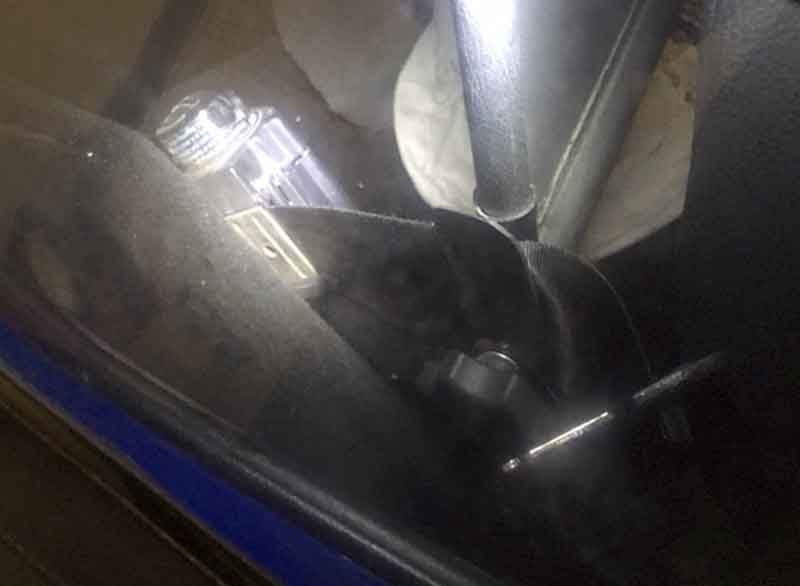

... but another image of the same car doesn't appear to show the upper mounts.

This late Mk1 built in February 1967 does have the upper arch mounting points. Car-from-UK.com

72 GT with inertia reels, can't see the static boss, but could be hidden by the seat cushion (Clausager)

73 GT (Clausager) and 75 V8 with inertia reels on top of the arches as well as the lower bosses.


75 V8 brackets and reels (Kangol Reflex), note they are handed to allow the right-hand reel to clear the window but the belt exit at the correct angle.
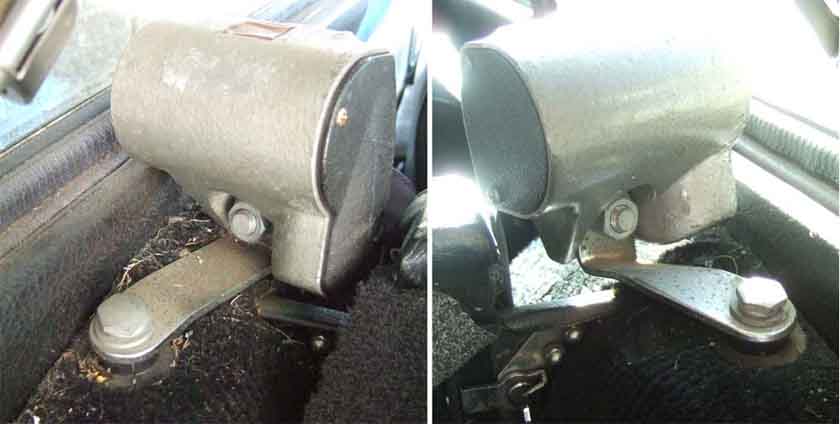
Vee's first replacement belt ...

... and the second - without the cover over the reel. Checking Bee's they don't have covers either.

The later reels are noticeably smaller, neater and less obtrusive than the originals.


... later about 5 inches forward. The change seems to have been made for the 1970 model year going by examples. A longer tunnel stalk is available from some sources for earlier cars.

Originally the tunnel strap was floppy and needed two hands to fasten. A one-handed version for UK statics was introduced which consists of a stiff plastic sleeve over the floppy belt, which Vee has for her inertia belts, also over the bottom part of the sill section. Current replacements uses a stiff cable as for inertia belts.

Original tunnel part from Vee. The plastic covering should go over the lower end of the buckle to support it for easy one-handed fastening, but over the years it has broken away meaning the buckle flops about and has been getting more difficult to fasten with one hand.
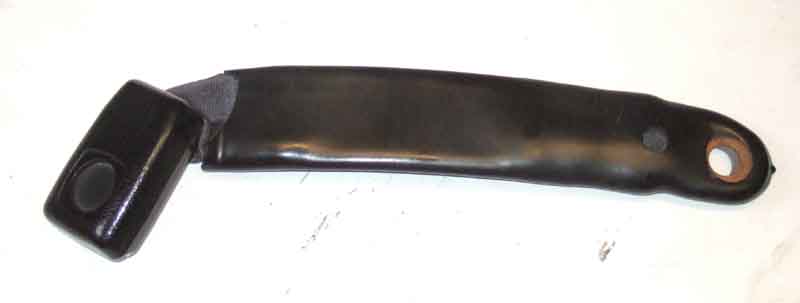
This is what it should look like.
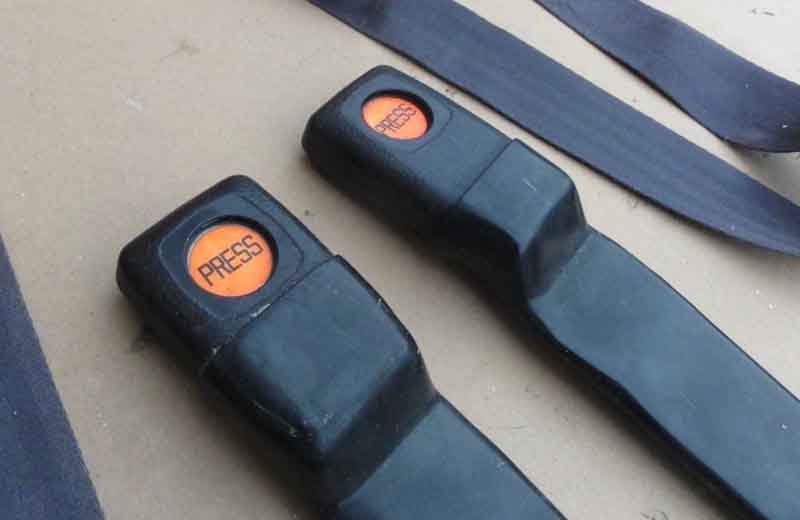
Bee's retro-fitted late model (they have seat-belt warning wires) stalks - plastic-covered stiff cable which means they can be oriented to suit then to all intents and purposes stay there. Vee's replacements are the same minus the wires.


See also this sans carpets and mats from John Pinna.


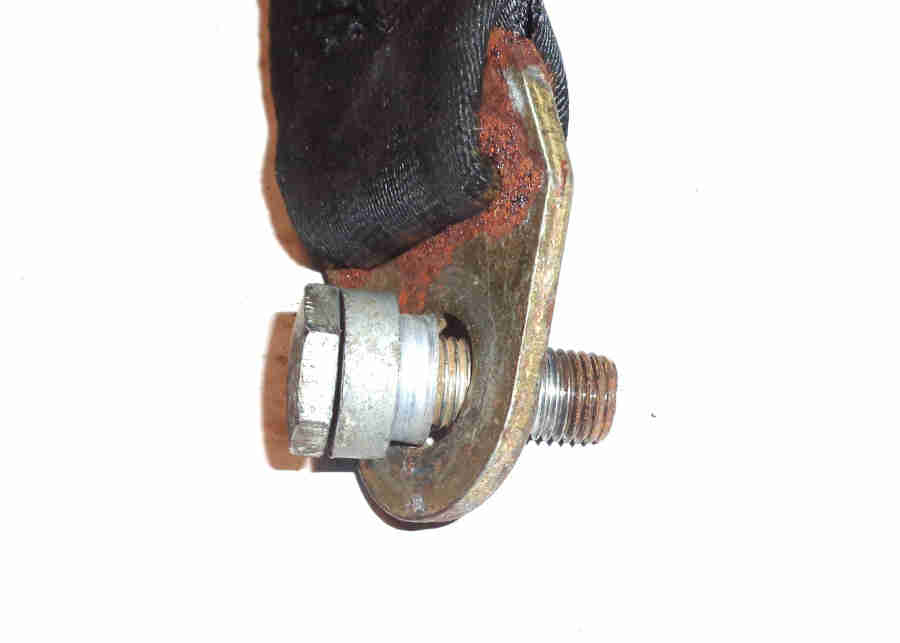

It took quite a bit of searching to find suitable bolts, out of the main MG suppliers only Rimmer Bros seem to list them. Seat belts are hidden under 'Accessories' and 'Interior styling', that only lists full kits, but then I spotted some fittings hidden even more determinedly under 'Door seals and trim fittings'! Still not plain bolts though, just the special fitting for the detachable shoulder belt that mounts on the rear tonneau panel of roadsters at £42. More Googling was needed before I found the bolts at £2 under Triumph Spitfire: (Rimmer Bros)

Other sources are available of course, seat-belt specialists would be preferable to be sure you get the right grade of bolt. They use a shouldered spacer so that when the bolt is tight the belt can still pivot as needed, together with a wavy washer which prevents the belt anchor rattling on the spacer. This kit is for two belts (only the tunnel and sill points use them) and indicates wavy washers are included but not shown in the image:

As shown above the tunnel and sill anchor points have pronounced bosses protruding through the carpet so a plain bolt could be used without a spacer, but would need to be tightened putting the belt in a fixed position.
Short of that a stepped bolt can be used: (SeatbeltSpecialist)

Also needing a wavy washer: (Somerford Mini)

If the bosses on the body get damaged these purpose-made mounting points should be satisfactory with suitable preparation and welding: (Vintage Warehouse 65)


Positioned as shown here I can't see them being that convenient to use, unlike the hook (below) that replaced it: (MGB Experience)

Seat-belt hook BHA5236, replaces the above (shown on a GT) in Feb 77 with Kangol belts.

